Part 5: Dances of Anatolia, the Caucasus, and the Middle East
16 Dances of the Caucasus
1. Geography and History
The Caucasus[1] is the strip of land between the Black Sea and the Caspian Sea that lies between Turkey and Iran (to)in the south and Russia (to)in the north. The former Soviet republics of Abkhazia, Azerbaijan, Karachay-Cherkessia, Ossetia, Chechnya, Dagestan, and Georgia are part of the Caucasus. The languages of this region are mostly forms of Kartvelian, which are not related to the Indo-European languages of Armenia and Iran. The Caucasus has been part of the Persian Empire, the Russian Empire, and the Soviet Union. In recent times there have been bloody ethnic conflicts in Georgia, Chechnya, Ossetia, Azerbaijan, and Abkhazia.
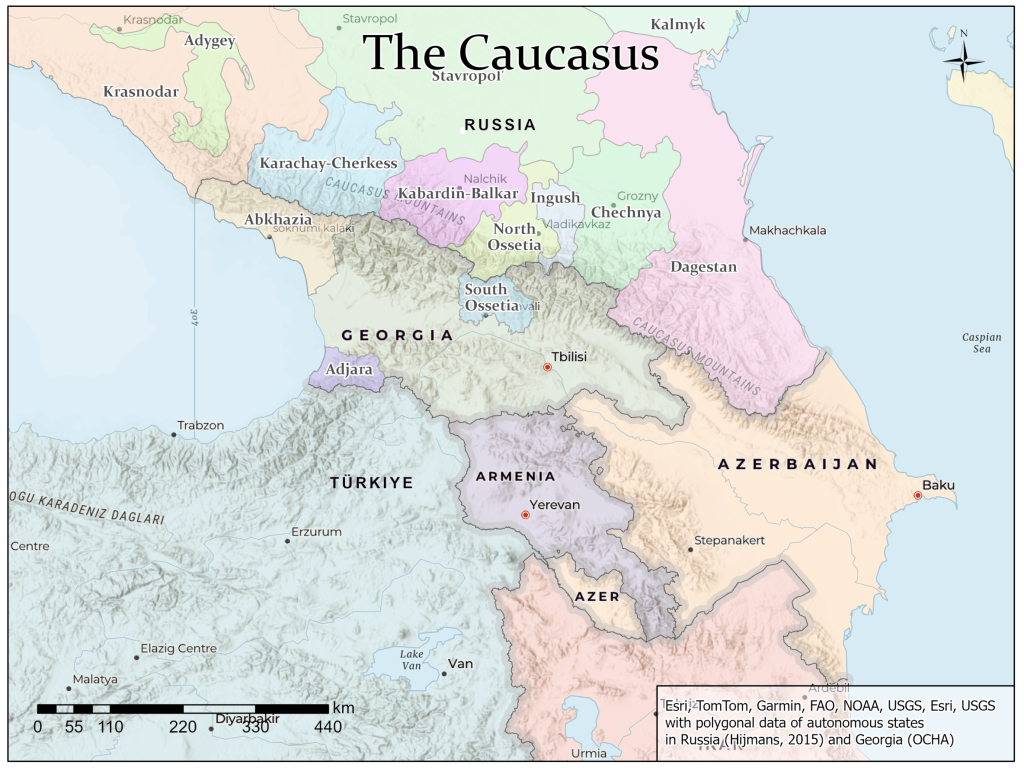
2. Armenia (Հայաստան)
2.1. History and Geography
The current boundaries of the Armenia Republic (Hayastan or Հայաստան in Armenian) are as a landlocked country tucked into the strip of land between the Black Sea and the Caspian Sea. It is bordered on the South by Iran, in the east by Azerbaijan, in the North by Georgia and in the west by Türkiye. Armenia is unique in the region as being both a country that is majority Christian and a country that speaks an Indo-European rather than Caucasian or Turkic language. The borders of Modern Armenia are much smaller than that which was historically considered the Armenian homeland. A large part of historical Armenia is now part of Türkiye. As mentioned above, there is a controversy over the Armenian genocide, which is recognized by most nations, but vehemently denied by the Turkish government. This event (1915-1917) created a massive diaspora of Armenians in the USA because thousands of Armenian refugees fled to large US cities such as Fresno in California, Watertown in Massachusetts, and Detroit in Michigan. Much of what we know about western Armenian dances actually comes from these diasporic communities. In fact, there are even dances called “Fresno” and “Detroit”.
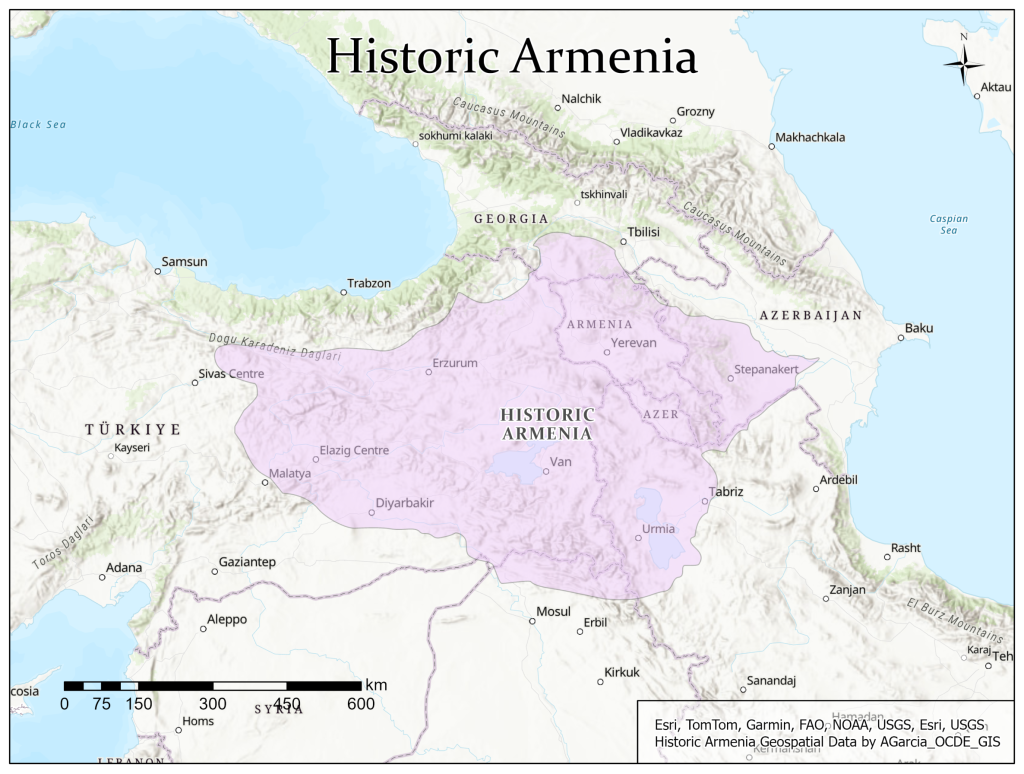
Armenia was the first countries to adopt Christianity as a state religion in the 4th century CE. It maintains today its own unique brand of the religion called the Armenian Apostolic Church. Although Eastern Armenia is now an independent country, with its capital in Yerevan, Armenia as a whole has been ruled by many of its neighbors. The Persians, the Byzantines, the Ottomans, and the Soviets have all controlled the country. Since 2020, The republic of Armenia has been in an on again off again war with Azerbaijan over the contested border region of Nagorno-Karabakh.
2.2. Armenian Music
Armenian traditional ensembles play many of the same musical instruments as Turkish musicians play. In addition, Armenian music is often dominated by the haunting sounds of a clarinet-like instrument called the duduk (դուդուկ). Also commonly heard is the sound of a harp-like instrument called the kanun (քանոն). The music is often accompanied by the oud, which is found throughout the region and percussion instruments such as frame drums (called ghaval), the larger dhol (Դհոլ) and the dumbek.

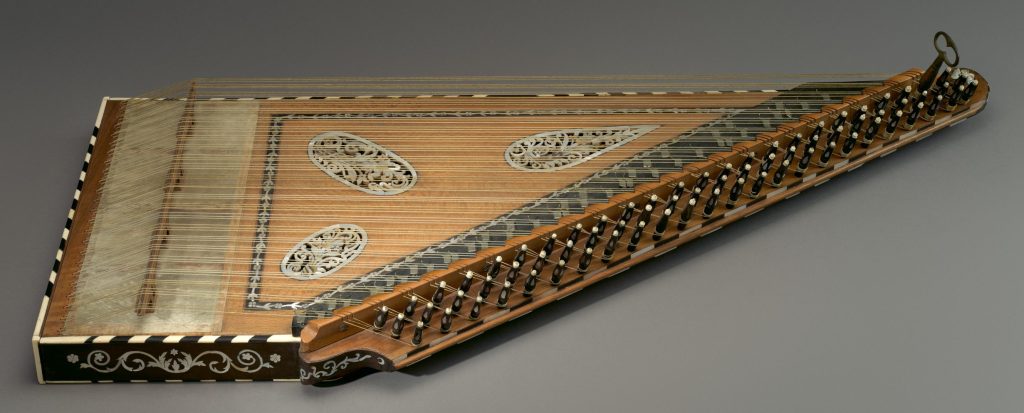
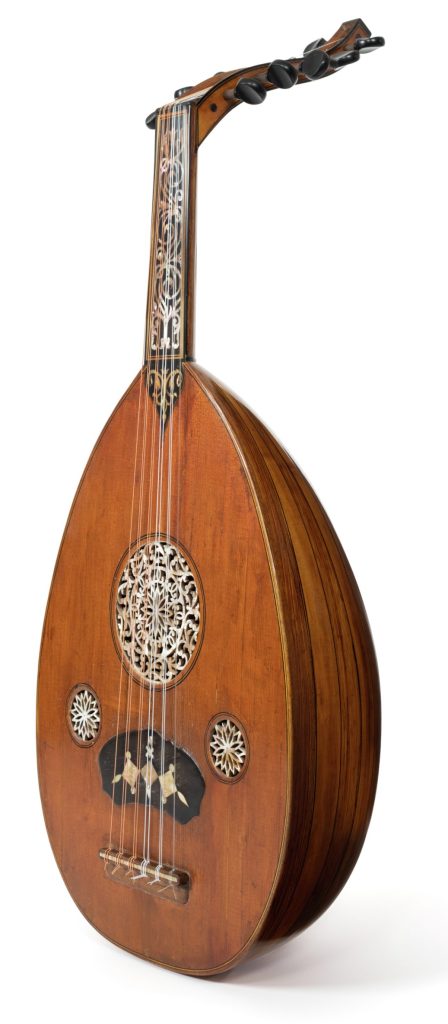
- Duduk: https://youtu.be/zwgvelZPb10?si=NdlYHpdI_gU-Gl6Q
- Kanun: https://youtu.be/SN8HYcQHWVI?si=FuN53YaLvSkQI5QH
- Oud: https://youtu.be/Pji-5MsAJI8?si=vfob4yWtB0GMFTXr
- Dhol drum: https://youtu.be/_kfjqWX1rjU?si=QSoWF05d6AmINMBG
- Ghaval drum: https://youtu.be/senlUT40TgM?si=7bCFQo-0Pr4x7Sji
- Muradian Ensemble playing Shoror featuring the duduk: https://youtu.be/B8YHAPG_OMI?si=bH4E_qkGIU6qmR_q
2.3. Armenian Traditional Dress
Armenian traditional dress is typically made of red velvet, or white silk. The women wear long floor-length skirts, pillbox-hats with flimsy veils, and blouses with very long flowing sleeves. The men wear short jackets, usually with wide vertical embroidered banding.
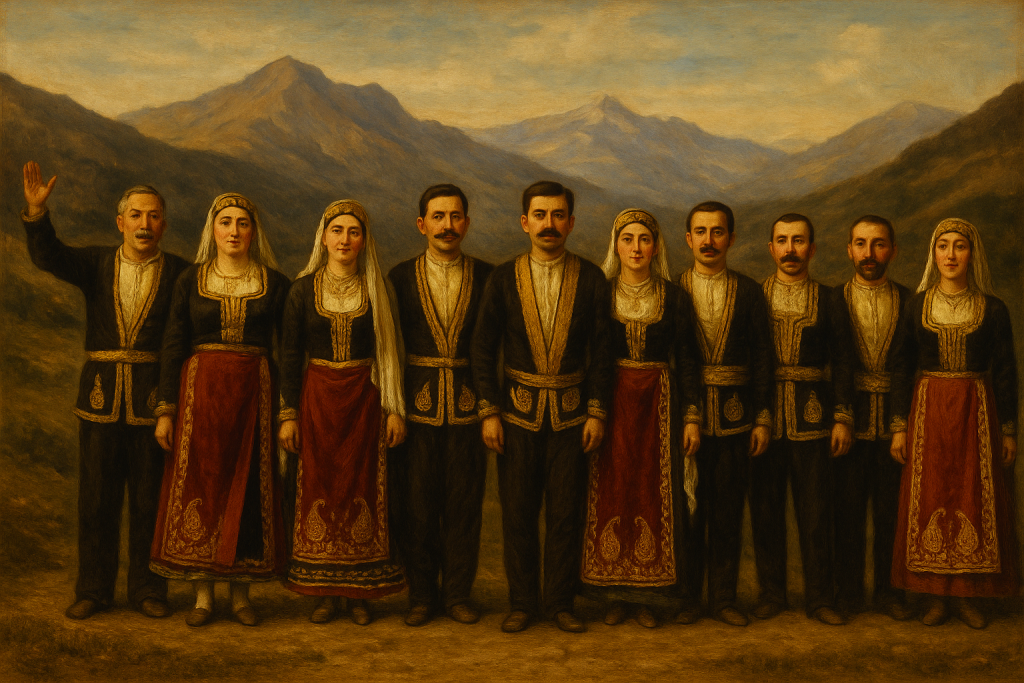
2.4. Armenian Dance
Armenian dancing is called Bar or Par (բար) in Armenia. The dancers often hold pinky (little) fingers with each other, and the arms tend to sway from side to side like windshield wipers. Common Armenian dances include the Kochari (Քոչարի), commonly a men’s dance, which is supposed to imitate the movements rams make when they fight. The women do a graceful style of dance called Shoror (Շորոր) which involves graceful arm sweeps and flowing footwork. There is a family of related dances (Ambee Dageets (Ամպի Տակից), Sirun Aghcheek (Սիռուն Աղջիկ), Ooska Gookas (Ուսկէ կու գաս), and others) which are characterized by the “Armenian two step”, which is a syncopated step where the dancers step on counts 1, 2, and 4 of a 6-count measure. Two other characteristic dances are the Govand (Գովնդ) and the Mom Bar (մոմ բար), both of which are often danced holding candles at the end of a party or evening of dancing.
- Armenian windshield wiper arms: https://youtu.be/H8rX_KRG1-A
- Kochari: https://youtu.be/u4ah4o_vWTE
- Ambee Dageets: https://youtu.be/kpmE3xcI6OQ
- Shoror: https://youtu.be/tdWYdkdFL5s?si=G1dIZk05rPvZuH8U
- Govand: https://youtu.be/cpjvyDnBRjU?si=1ouBiQfbQxy5B3gU
3. Georgia (საქართველო)
3.1. History and Geography
On the northern border of Armenia, we find the Republic of Georgia (also known as Sakartvelo, საქართველო) with its capital in Tbilisi (თბილისი). Like the Armenians the Georgians are predominantly Christians, but they speak a completely different non-Indo-European language that is part of the Kartvelian group. Georgia is bordered on the west by the Black Sea on the north and east by Russia. The area has been ruled over the years by many different empires including the Persians, the Ottomans, the Russians, and the Mongols. During the Soviet Era, it was part of the USSR, even being the birthplace for one of that nation’s most famous dictators: Joseph Stalin (იოსებ სტალინი, Ioseb Jughashvili). Georgia left the USSR in 1991 and has been a western ally in the region since the early 2000s. There are three autonomous regions in Georgia: Adjara, South Ossetia (where they speak a Persian language), and Abkhazia. These regions are linguistically distinct but show much in common with Georgian dance and music.
3.2. Traditional Dress
Georgian men’s costumes are quite martial in appearance. The men wear long coats, often with bandoliers of rifle bullets across their chests. They wear fuzzy woolen hats known as papakha (ფაფახი) and shiny black boots. The women’s costumes are similar to those of Armenia; except they have even longer sleeves that extend well past their hands.
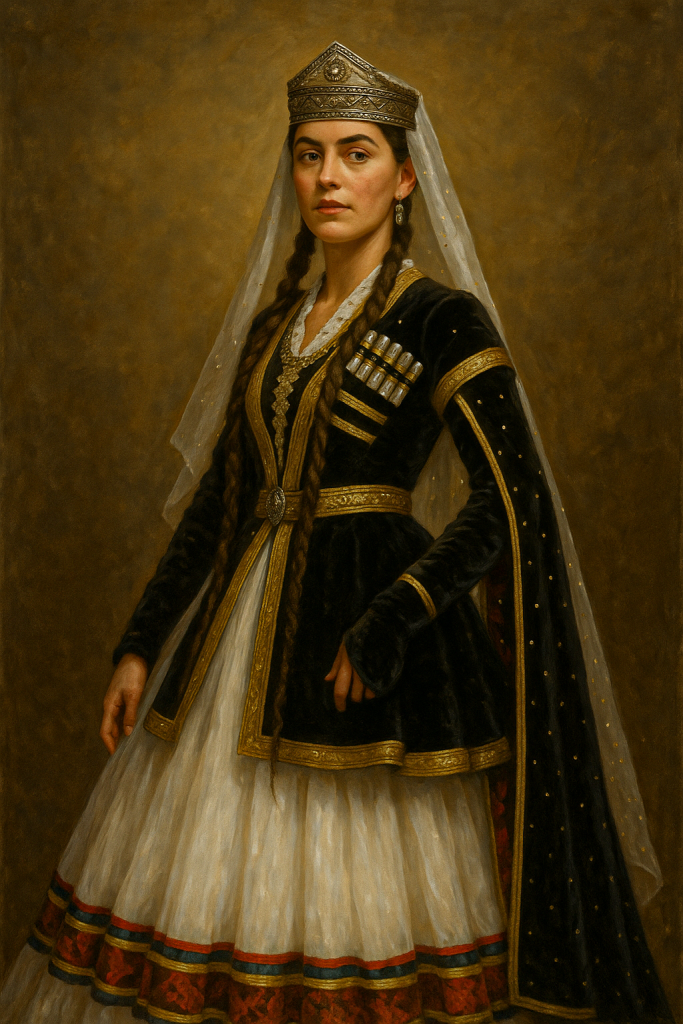
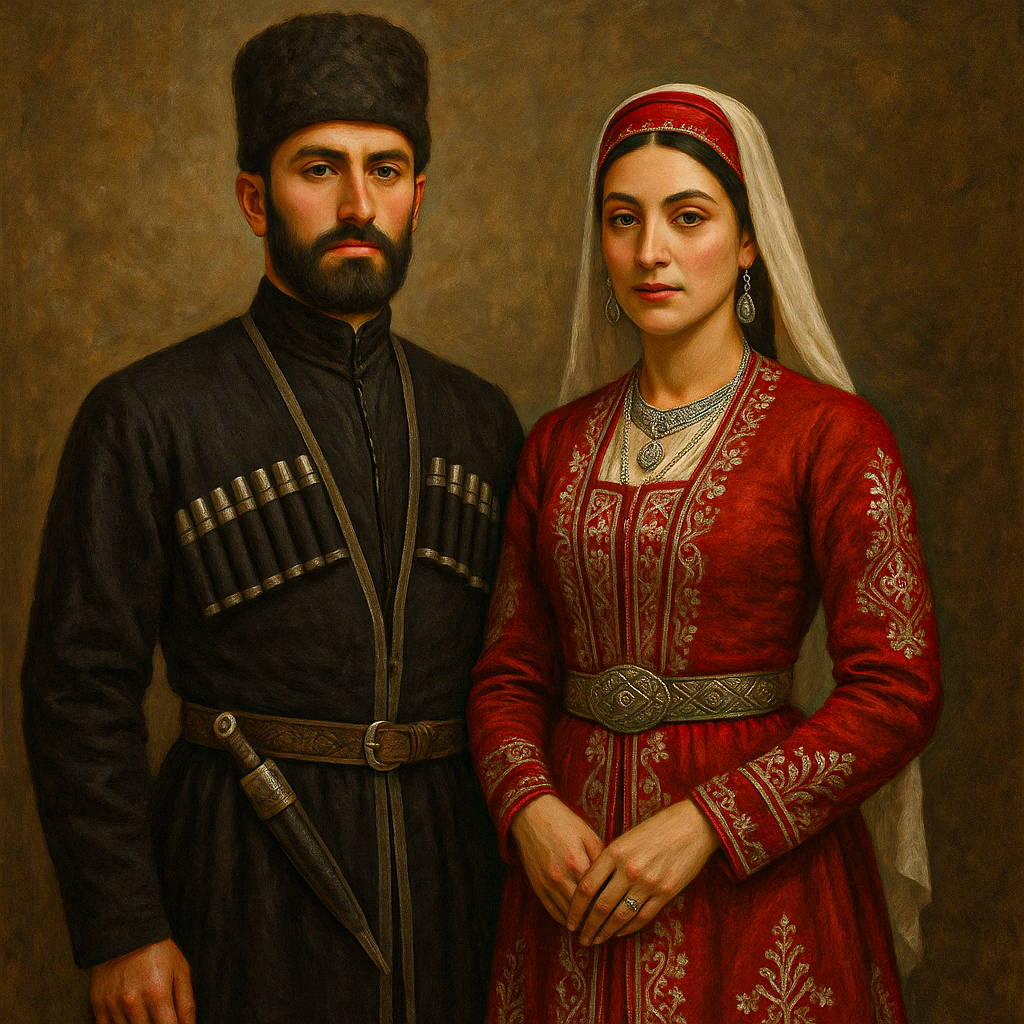
3.3. Georgian Music and Dance
The most prominent instruments in Georgian music are the davul or drum and the very unique sounding Garmoni Accordion (გარმონი):
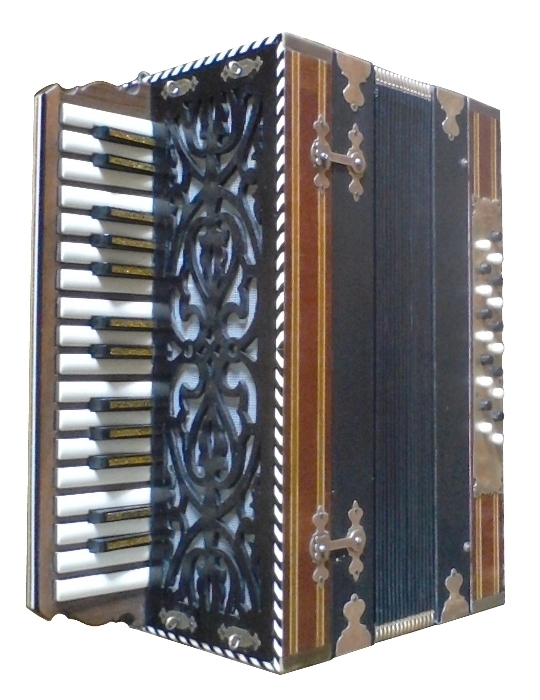
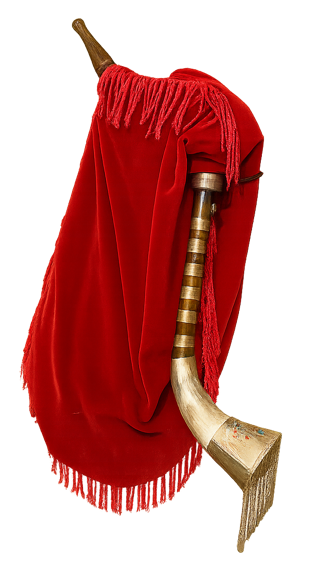

Georgian dances (ცეკვა) are perhaps among the most spectacular in all of Europe. The women take advantage of their long flowing skirts and do dances that make them appear to float or skate across the floor in the dance called Nanari (ნარნარი). When combined with flourishes of their long sleeves these dances can be incredibly beautiful. The couple dance Kartuli (ქართული) builds upon the elegant movements of the women’s dance but adds in show off figures for the men. In contrast, when dancing solo the men do dances that are incredibly acrobatic. They leap in the air and land on their knees. They spin around the room on their knees. And, most incredibly, they dance on the knuckles of their toes in soft boots. This unique dance step reportedly comes from their need, as goatherders, to negotiate the labyrinth of narrow goat trails through the rugged mountains of Georgia.[2]. Like their costuming, the men’s dances are also martial. These war dances are called Khorumi (ხორუმი) Georgian men are most famous for doing fighting dances with real swords and shields.
- Floating Georgian Women’s dance: https://youtu.be/3xcZHA8mFgc
- Georgian Men’s Dancing: https://youtu.be/howJvsCtKbw
- Georgian Men’s Dancing in the snow: https://youtu.be/S95Uz0kqojM
- More Georgian Men’s dancing: https://youtu.be/apnNtpo81_g
- Georgian Sword Dancing: https://youtu.be/8OsAsJejxJY
- Kartuli: https://youtu.be/dD7opGDkWME?si=IFrcM329T-JqNQc0
- Laz Dance (Heyamo): https://youtu.be/pIIbToRsidw
4. Other Countries in the Caucasus
The remaining countries/regions in the Caucasus are all largely Muslim. These include the following republics within Russia: Adygea, Karachay-Cherkessia, Kabardino-Balkaria, North Ossetia, Ingushetia, Chechnya, Dagestan. These countries are all part of Russia but have varying degrees of independence from Moscow. Some republics such as Chechnya fought brutal wars of independence, often with Islamic fundamentalism as a pretext.
Azerbaijan is a completely independent republic that lies south of Dagestan on the coast of the Caspian Sea. It is bordered on the west by Armenia. Sadly, Armenia and Azerbaijan have fought a number of brutal wars, including over the recent invasion of Nagorno-Karabakh, which was an Armenian enclave surrounded by Azerbaijan. They speak a language related to Turkish in Azerbaijan, and there are deep connections between the Turks and Azeris.
The most famous dance in Azerbaijan and the Russian Caucasian republics is the Lezginka. It is closely related to the Georgian Kartuli. One also finds several different Halay dances. The instrumentation and costumes are similar to those found in Georgia and Armenia.
- Lezginka Video 1: https://youtu.be/TqsKjDTAtaQ?si=6-sPgPpyg9jjKbvK
- Lezginka Video 2: https://youtu.be/U2Ly_lsdHn8?si=mRki1Y-_N9igXNUf
Further Reading
- And (1959); Avanessian and Shannon (n.d.). See the references section at the end of the book for full citations.
- https://en.wikipedia.org/wiki/Caucasus
- https://en.wikipedia.org/wiki/Music_of_Armenia
- https://en.wikipedia.org/wiki/Armenian_dance
- https://ich.unesco.org/en/RL/kochari-traditional-group-dance-01295
- https://armeniaholidays.com/armenian-national-dances/
- https://socalfolkdance.org/articles/history_armenian_dance_lind-sinanian.htm
- https://sfdh.us/encyclopedia/armenian_folk_dance_types_houston.html
- https://festival.si.edu/blog/dancing-armenian-anatolia-caucasus-and-beyond
- https://en.wikipedia.org/wiki/Georgian_dance
- https://georgia.travel/why-georgia-georgian-dance
- https://en.wikipedia.org/wiki/Lezginka
Some Suggested Dances for Teaching
Armenian dances
- Ambee Dageets: http://folkdancemusings.blogspot.com/2014/04/ambee-dageets-armenian-turn-armenia.html
- Sirun Aghcheek (Sweet Girl): http://folkdancemusings.blogspot.com/2014/04/sirun-aghchik-sweet-girl-armenia.html
- Ooska Gookas: http://folkdancemusings.blogspot.com/2014/04/ooska-gookas-armenia.html
- Laz Bar: http://folkdancemusings.blogspot.com/2014/03/laz-bar-armenia.html
- Mom Bar: http://folkdancemusings.blogspot.com/2014/03/mom-bar-armenia.html
- Govand: https://folkdancemusings.blogspot.com/2023/08/govand-shannon-version-armenia.html
Georgia and Laz Dances
- Alissa Tsekva: https://folkdancemusings.blogspot.com/2019/02/alissa-tsekva-georgia.html
- Heyamo (Laz): https://folkdancemusings.blogspot.com/2019/08/heyamo-laz-people-turkey.html
- Amiranis Perkhuli: https://folkdancemusings.blogspot.com/2021/06/amiranis-perkhuli-georgia.html
- Khoromi: https://folkdancemusings.blogspot.com/2021/10/khorumi-georgia.html
- Qansav Qipiane: https://folkdancemusings.blogspot.com/2022/06/qansav-qipiane-georgia.html
Azeri and Dagestani dances
- Coşkun Çoruh: https://folkdancemusings.blogspot.com/2020/09/coskun-coruh-turkey.html
- Esmer: http://folkdancemusings.blogspot.com/2014/06/esmer-kilic-version-azerbaijan.html
- Reyhan: http://folkdancemusings.blogspot.com/2014/08/reyhan-azerbaijan.html
- Alagöz: http://folkdancemusings.blogspot.com/2018/11/alagoz-azerbaijan.html
Discussion Question
Discussion Question 1
In each of the ethnicities discussed in this chapter there are often quite radical differences between women’s dances (which are often floating and elegant) and men’s dances (which are martial and acrobatic). We know women can be fantastic acrobats and men can dance slowly and elegantly, so speculate on why there may be this gender difference.
Media Attributions
- Figure 16.1: Map of the Caucasus © John W. W. Powell. Additional geospatial data cited in map. Used here with permission.
- Figure 16.2: Map of Historical Armenia © John W. W. Powell. Additional geospatial data cited in map. Used here with permission.
- Figure 16.3: Duduk © Andrew Carnie, personal collection
- Figure 16.4: Kanun © The Cosby Brown Collection fo Musical Instruments, Metropolitan Museum of Art is licensed under a CC0 (Creative Commons Zero) license
- Figure 16.5: Oud © Musical Instrument Museum, Phoenix. Used with permission
- Figure 16.6: Armenian costumes © Andrew Carnie with assistance from ChatGPT
- Figure 16.7: Georgian Folk Costumes © Saman Meihami, with the assistance of ChatGPT. Used with Permission
- Figure 16.8: Georgian Folk Costumes © Saman Meihami, with the assistance of ChatGPT. Used with Permission
- Figure 16.9: Garmoni Accordion © ნ.ჯოხაძე is licensed under a CC BY-SA (Attribution ShareAlike) license
- Figure 16.10: Gudastviri © Musical Instrument Museum, Phoenix. Used with permission
- Figure 16.11: Georgian Zurna © Musical Instrument Museum, Phoenix. Used with permission

